|
|
Additional
information on
|
|
Nikon (Nippon
Kogaku K.K.) Prism Reflex Housing
for Nikon S-Mount telephoto lenses on Nikon Rangefinder (RF) cameras
|
HTML File Size: 72K Loading ...Early Draft - SITE
PREVIEW ONLY
| Introduction:- SLR displays an image through the
camera's lens and eliminates common parallax errors on a typical rangefinder system
esp. at close range focusing where it started to increase as the focusing distance
decreases. The angle of view of a given lens also changes with distance. Overall,
rangefinder focusing can be very accurate for normal to moderate wideangle photography.
But at extreme both ends of the spectrum in particularly macro, duplication &
long telephotography, its weakness will become apparent. Rangefinder focusing system
uses a built-in bright-line frame inside the finder to aid photographer with the
lens' picture angle. However, the system has physical constraints esp. when using
with ultrawideangles and telephotos where the bright-line frame becomes too small.
During the early days, ultrawideangle photography beyond 35mm would require a add-on
Optical Finder, whereas for long telephotography beyond 135mm, none of the popular
camera labels had provided a frame line inside finder due to practical reasons. Some
of the newer series of rangefinder Nikon rangefinder Cameras introduced were equipped
with a 28mm wideangle bright-line frame but there for telephotography beyond 13.5cm,
photographers would require a Reflex Housing for focusing control. Reflex Housing
is just an accessory that added between the picture taking lens and the camera body.
It houses a reflex mirror. In a way, it works like a reflex camera principle but
the mechanism is entirely mechanical and thus, it only offers possibility like a
reflex camera. It operates via a cable release that connects to the camera and the
housing, when you trip - it raises the mirror and fires away with a shot. Using a
Reflex Housing indirectly adds up the distance between the lens and film plane, which
also means usual lenses can also be used for close-up or macro photography. For telephotography,
the reflex housing solves the, otherwise tiny frameline inside the viewfinder which
may cause rangefinder misaligned or leading to incorrect focusing. As many added
on magnifiers (such as right angle and even 45°
angled finder with high magnification ratio etc.) were being design to provide convenience
and pinpoint focusing, it had indirectly expands the rangefinder system capabilities
to other applications. However, a negative aspect is, as the basic assembly only
has a mirror within and it was not a complex prism finder design, so, the image is
reversed. |
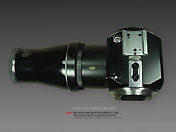 |
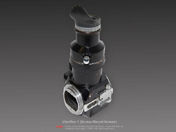 |
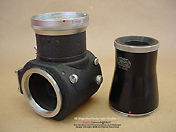 |
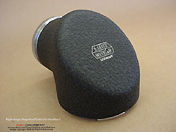 |
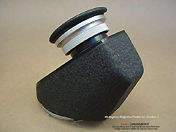 |
|
Leica
PLOOT
|
Visoflex
1 screw mount
|
Leica
Visoflex 1 w/ 5X Magnifier
|
Right
Angle Magnifier for Visoflex 1
|
45° angled Magnifier for
Visoflex 1
|
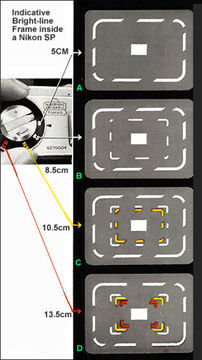 |
I am not particularly sure who
was the smart guy who had invented this innovative accessory for RF tele-photography.
But probably it can trace back to Leica where Leitz first introduced their telephoto
back in 1935. The focal length was simply too long for accurate focusing with the
rangefinder. Leitz had designed a mirror reflex housing named PLOOT (Visoflex name
was adopted after the war) for the purpose of focusing/framing. As some of the Leitz
lenses had short mount or their lens head can be removed and permits use of universal
focusing to be mount on the Visoflex and/or other accessories such as extension tubes
or even bellows. The Leica Visoflex-specific lenses cover from the short Elmar 65mm
to Telyt-lens group up to 800mm lenses. The Nikon's RF Nikkor lens usable with the
Reflex Housing were the Nikkor 18cm f/2.5, 25cm f/4.0, 35cm f/4.5, 50cm f/5.0, Mirror-Nikkor
100cm f/6.3 as well as as Bellow-Nikkor 105mm f/4.0 (Lens Head). Other possibilities
include normal lenses to be used for close-up works via increase distance between
lens and film plane (works just like and extension tube, except it is a fixed size
device). Unlike the Leica which can have many combinations/versions in relation to
the lens mount-type, Nikon has a more straight forward system integration with their
rangefinder camera/lenses. The purpose of this Section on Reflex Housing is essential
to addressed first as it relates directly to other pages featuring the few long telephoto
RF Nikkor lenses.
<<<---
Noted the 10.5cm / 13.5mm indicative bright-line
frame inside the Nikon SP ? For lenses that goes beyond the
13.5mm, it will become very difficult
to determine the focusing and other than viewing comfort, it may also lead to inaccuracy.
So, the Reflex Housing comes in handy even if it adds weight and size to portability,
with the additional inconvenience in reverse image projection.
|
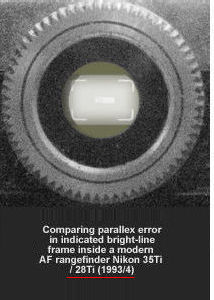 |

|

|
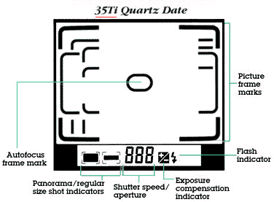
Comparing
the viewfinder auto illuminated frameline with a modern AF rangefinder Nikon 35Ti / 28Ti (1993/ 1994) which
has a fixed focal length Nikkor lens built-in. The parallax error also occurred
when shooting at close range.
|
|
Normal
|
Panorama
|
|

|

|
|
0.5m~1.2m
|
0.4m
~10.m
|

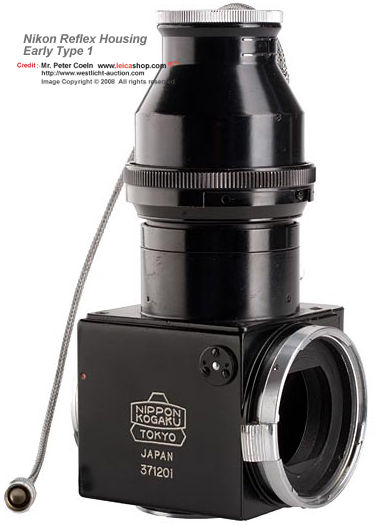 |
Nikon (Nippon
Kogaku KK) Reflex
Housing Model 1
Introduced:- 195? Discontinued:- 1955/6
The Nikon Reflex Housing Model one was introduced to supplement the RF Nikkor
25cm f/4.0 telephoto lens which the conventional built-in finder frame line cannot
accommodate such a long tele-focal length. In relation to its introductory date,
there were some conflicting data* but I guess around 1954 should be
more precise as most other long telephoto lenses were introduced beginning from this
stage. The Model 1 has a rather conservative design and it has quite a similar original Leica PLOOT model (1935~1950) where it came with a square,
boxy appearance. Focusing is via a vertical magnifier and the finder is removable.
I am not sure some of the older variable finder-types such as right angle finder
can be fitted onto this version but according to various sources, even though the
Finder has been designed with a provision for interchangeability but there was no
known finder type other than the Right Angle Finder (as shown at the bottom pictures).
But one known problem in its design was the screen inside the main module will not
rotate when you intend to revert the camera side way for vertical format shooting.
Only the main module was serialized but the removable finder was not in the Model
1. At the left hand side of the main chassis were the slide for switching the camera
body for vertical shooting. An inconvenience operational design was the different
location of the cable release sockets, one at the top and another at the bottom.
Anyway, it was Nikon first effort for a Reflex Housing Unit and in many aspect it
lagged behind the Leica such as more Magnifier options like 5X and 30X Magnifier
were offered. Besides, Leica (and 3rd party makers) also has other extension of accessories
such as a Micro-Mirror Reflex Housing / Novoflex for close-up / Duplication photography
etc.) ; So, even though the original Nikon Reflex Housing may be considered as a
commendable effort by the Japanese manufacturer, but it had some shortcomings in
its overall system. However, many of which that found in the early Model 1 were being
patched / upgraded in the Model 2 that appeared in 1956.
|
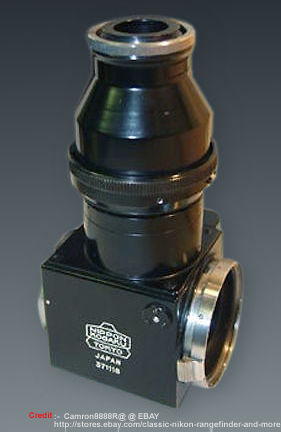 |
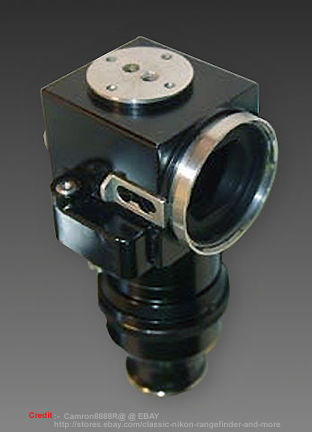 |
Mr. Robert Rotoloni, author of Nikon Rangefinder Camera had suggested in his
journal that the Model 1 bear serial number from 371000~371190, which makes this
early Model I Unit less than 200 units were being produced.
Credit: Image(s) displayed
here are courtesy of CamRon8888@Ebay® where his EBAY STORE often list many hard
to find used photographic equipment. Image(s) copyright © 2006. All rights reserved.
Please respect the visual property of the contributing photographer.
|
| |
|
|
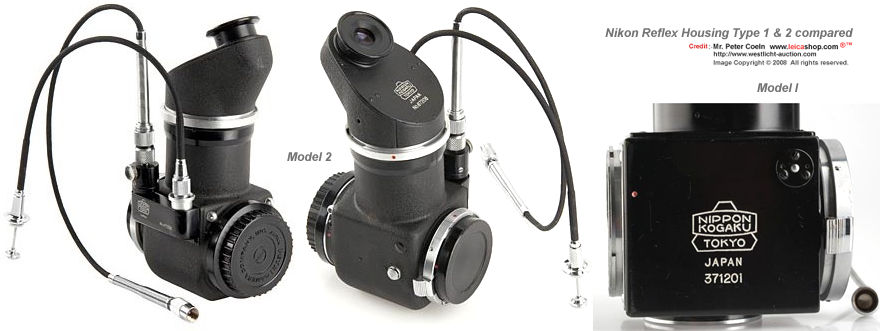 |

Nikon (Nippon
Kogaku KK) Reflex
Housing Model 2
Introduced:- 1956 Discontinued:- 1963/4
The next update for the Nikon reflex Housing was introduced in 1956. It was a
complete redesign and in many ways it was a radical change with a smooth, round corner
design. Further, Nikon has also designed a couple of Finder / Magnifier that center
around the Model 2 to increase its operational ease. Further, the exterior finishing
has been changed to a crinkle finish which in a way has helped to project a rugged
and rigid look and feel. Incidentally, this update also has some similar exterior
finishing like the Leica Visoflex 1 Model (1951~1956) that introduced after the original
PLOOT effort (refer to the top
of this page). Unlike
the previous right angle finder, the model 2 was supplied with a 45 degrees Finder
which angled for the photographer to take easier view. Besides, the Finder has a
4X Magnifier within for pinpoint focusing. The previous vertical Finder was replaced
with an 90° Finder prism as
optional piece. There were two other major improvement in this version. Firstly,
the focusing screen is now be changed to rotate when the camera body is tilt vertically.
Secondly, both the mirror raised mechanism and shutter release cable socket were
placed at one side which add up to its ease of use. Further, the timing is adjustable
and the standard release can also be replaceable for other application such as when
use the camera for macro and duplicating / copy works. The Model 2 have two sets
of serial number for the main module as well as the finder.
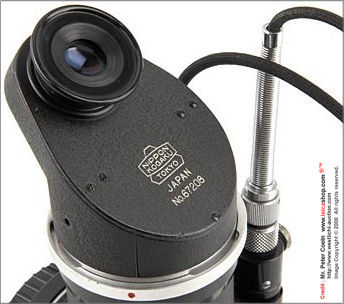 |
NOTE:- Many of the system accessories
would require the Reflex Housing for ease of photo composition and/or precise focusing.
As the nature of rangefinder could pose difficulties especially when working at close
focuses. In a way, mounting the housing also increase the lens to film plane distance
in affecting magnification. One acccessory that works particularly well with the
housing is the use of short mount lens (such as Nikkor-Q 1:4 f=13.5cm Bellow-Nikkor) with Nikon Bellow Focusing Device,
it enables magnification up to even 1:1. At such close distance and high magnification,
the reflex housing provides a more accurate view than depending on guess work or
manual calculation via camera rangfinder. Other combinations such for repro-copy
etc. would find the Reflex Housing also is an indispensible tool, so the housing
is not entirely to be used only for long tele-Nikkor lenses only.
|
|
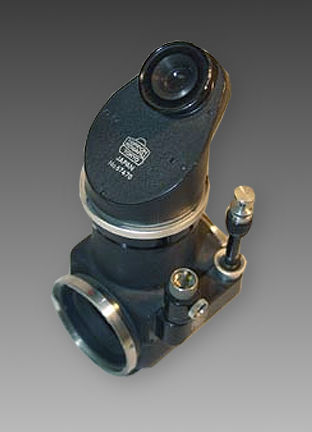 |
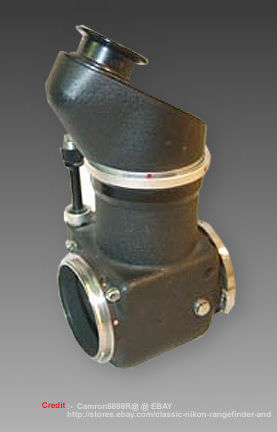 |
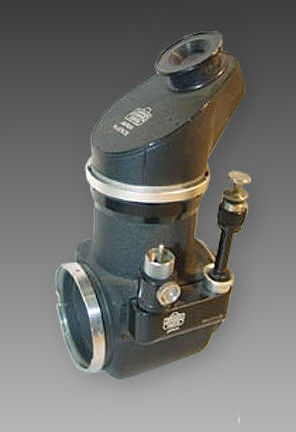 |
| |
|
|
 |
| The alternate 90° Right Angle prism has a rather oversized prism head component.
When mounted onto the Reflex Housing, it works something like a SLR type of eye-level
finder. Could have been designed like the Leica Right Angle Finder for the Visoflex
1 which is more compact and handy. |
| In general,
the Nikon RF Reflex Housing Model 2 was a far improved finder than model 1. It was
designed to supplement the Nikon and the long focus lenses such as 180mm, 250mm,
500mm and 1000mm reflex Mirror lens. The housing was also required as a component
with the Nikon Bellow Focusing Attachment unit. It may be added between the top stage
of the Nikon Repro Copy Outfit, Model S and the Nikon RF body to add approx. 74mm
of extension for larger image size on the film with the Repro Copy Outfit for a direct
accurate view during focusing. |
|
 |
The front and
the rear bayonet mounts are used in a conventional way to fit a Nikon and the lens.
Just match the red index dot and will lock the various components in place or for
detaching. You may adjust the eyepiece of the 4.3X Magnifier on to the image erecting
prism until the small circle on the ground glass is sharp or clear. The prism / Finder,
as mentioned earlier, is removable from the main console via turning counter clockwise
rotation in the bayonet mount.
<<<---- An excellent picture of
the Model 2 with other RF Nikkor long telephoto lenses
|
 |
I am not good nor a historian
on RF Nikon/Nikkor, so it has to fall back to Guru when it relates to other information.
Again, Mr. Robert Rotoloni, author of Nikon Rangefinder Camera had suggested
in his journal that the Model 2 main console may bear serial number from 471000 onwards
to 471763. S/N for the 45° Angle Finder : 67000 ~67628; while
the 90° Angle Finder:- 77000~77032.
Credit: Image(s) courtesy of some
nice folks from DigifanCN®. The group
also operates their own active, popular EBAY STORE, trading
for many major camera brands and collectibles. Image Copyright © 2008. All rights
reserved. Please respect the visual property of the contributing photographer.
|
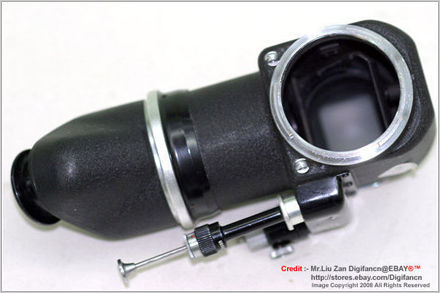 |
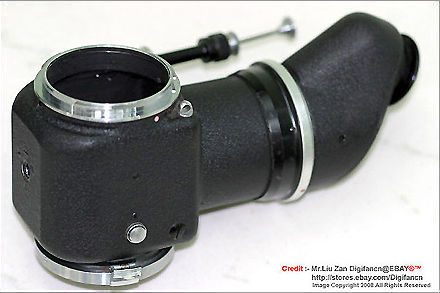 |


| Credit:- Co-developed with my friend, Rick_Oleson. THANKS to all the contributors in the form
of images/pictures as well as content which made up the basis of this RF Nikkor site.
Image(s) copyright © 2008. All rights reserved. Please respect the visual property
of the contributing photographer. Note: Certain content and images appeared in this
site were either scanned from official marketing leaflets, brochures, sales manuals
or publications published by Nikon over the years and/or contributions from surfers
who claimed originality of their work for educational purposes. The creator of the
site will not be responsible for any discrepancies that may arise from dispute except
rectifying them after verification."Nikon",
"Nikkormat", "Nippon Kokagu KK" & "Nikkor" are registered trade names of Nikon
Corporation Inc., Japan. Site made with an Apple G5 IMac. |
|